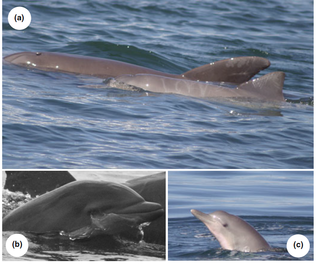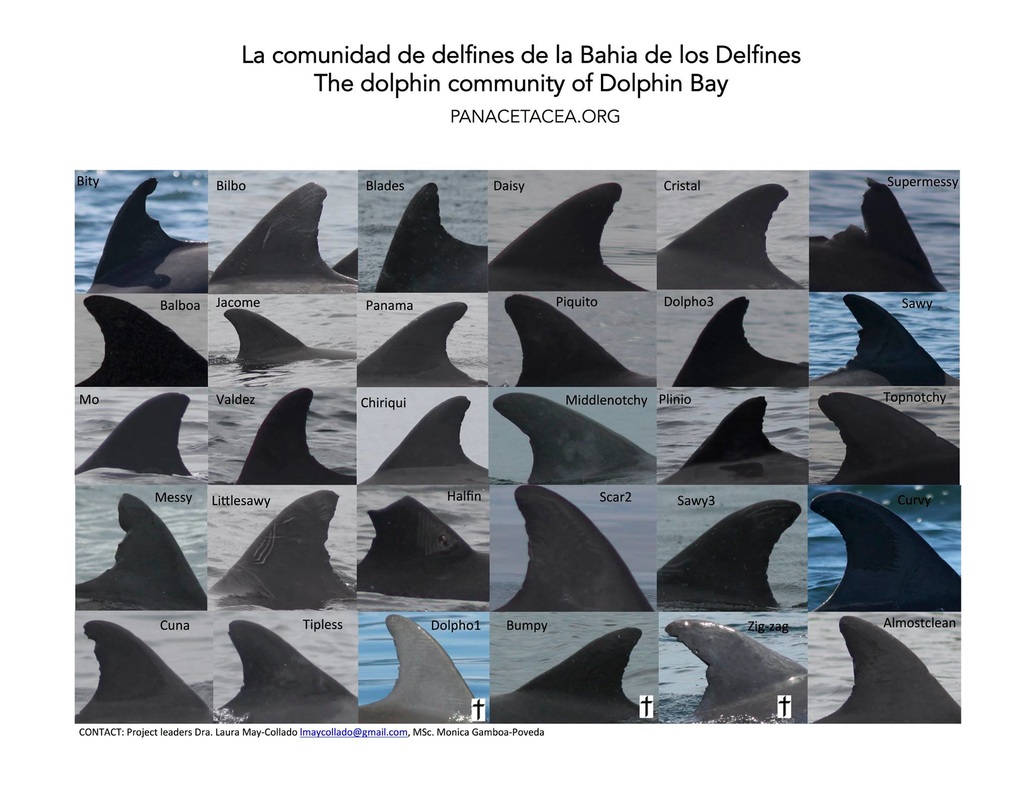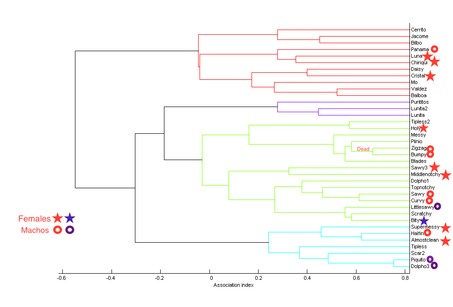Bottlenose dolphins of the Archipelago of Bocas del Toro, Panama: 2004-present
Community structure and Behavior
The bottlenose dolphins of Dolphin Bay in the Archipelago of Bocas del Toro (BDT) sustain the largest dolphin industry in Panama. An exponential increase in the dolphin watching boat fleet and lack of compliance by operators has raise concerns about the impact the industry in this bottlenose dolphin population. Our exploratory analyses suggests that the dolphin population of Bocas del Toro ranges from 72 to 87 dolphins. This population appears to be divided into two social communities. The largest community has a low recapture (1-5 months) and residency rate (7.7 to 38.5%) and a wider distribution within the Archipelago. The smallest dolphin community is restricted to Dolphin Bay and consists of 37 animals with a high recapture rate (5-13 months) and residency rate (38.5 to 100%). The Dolphin community is further organized into four social units (A-D) with 35% of the individuals showing residency rates ranging from 77 to 100% and 75% of the community with residency rates ranging from 38.55 to 70%. Communities also differ in their levels of associations, within the largest community dolphins show loose associations while in the Dolphin Bay community several individuals associate regularly and for long-periods of time. In a previous study SC/65a/SM15 we had found that BDT dolphins showed (both males and females) high levels of philopatry and that they possessed a unique mtDNA haplotype not found anywhere else in the Caribbean. In this meeting in a report presented by Barragan-Barrera et al. to the SC/66a subcommittee we find further support for the genetic isolation of the BDT dolphins using microsatellite data. Together these results emphasize the need for urgent measures to protect the BDT dolphin population. This dolphin population merits (1) a special consideration by the IUCN as threaten and (2) the commitment of the Panamanian government to ensure its well-being by finalizing the update of the current Resolution ADM/ARAP NO. 01 which has neither been updated nor enforced in eight years of its publication.
Guyana and Bottlenose dolphins of Gandoca-Manzanillo, Costa Rica: 2004-2007
 Photos by LJ May-Collado
Photos by LJ May-Collado
In the Southern Caribbean coast of Costa Rica, interspecific associations of the distantly related Guyana and Bottlenose dolphins occur on daily basis. In previous studies we found that during antogonistic interactions mixed groups produced hybrid signals. We are currently working on determining the social structure of both species, in single and mixed groups. Unlike bottlenose dolphins a very small percent of the bottlenose dolphins of Gandoca are residents, which brings questions about the nature of their mixed species society.


